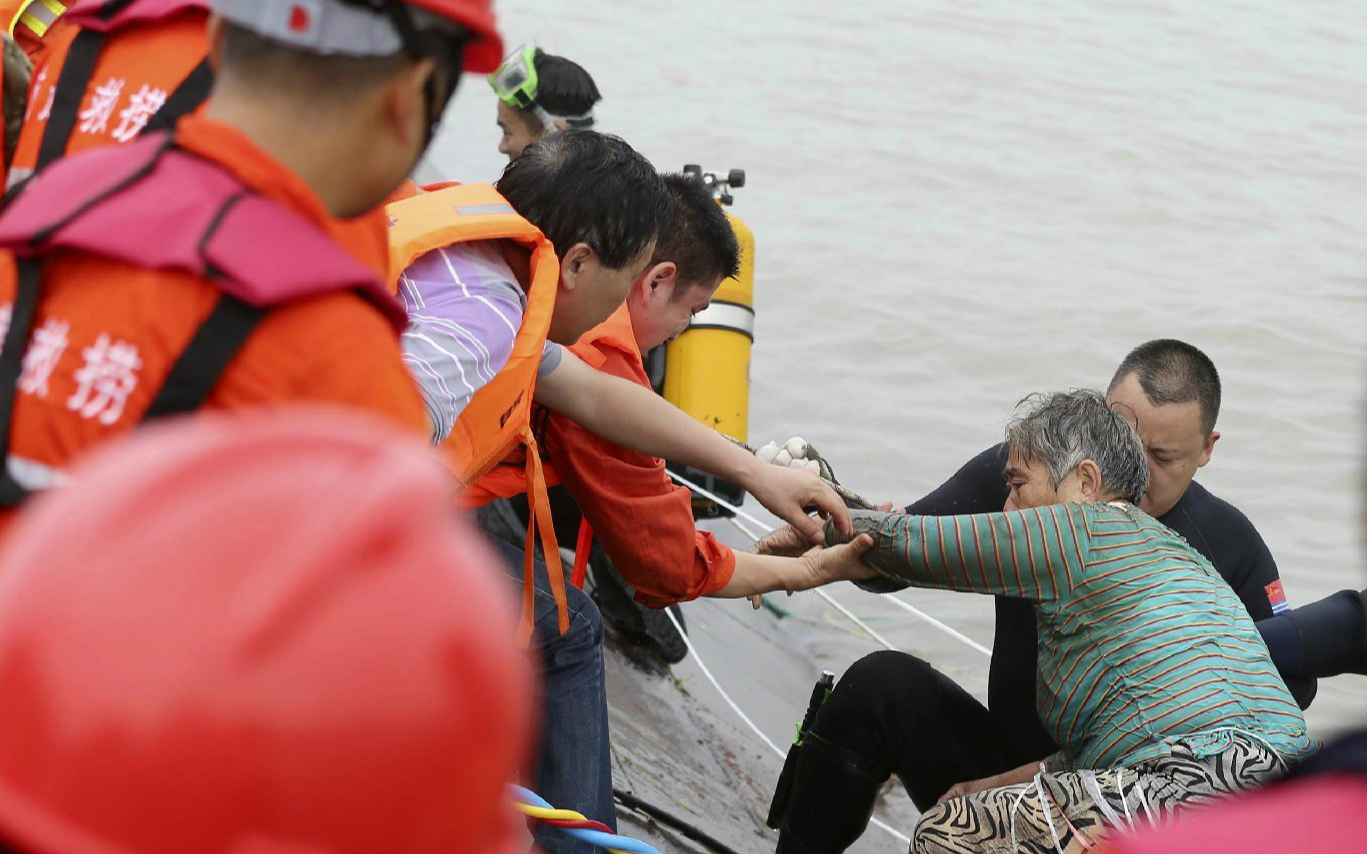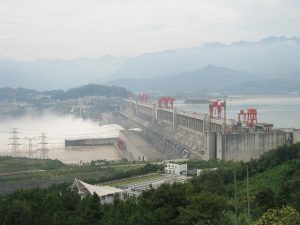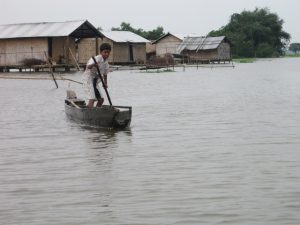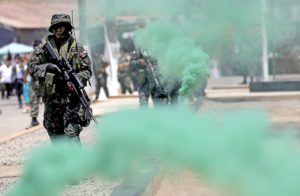Chinese cruise ship ‘Eastern Star’ overturned amid strong winds on the Yangtze at Jianli county near Jingzhou in Hubei. Following the disaster, which took place at 9.30pm local time on Monday night, only 13 had been rescued at the time of writing, out of a total 458 people on board.
Zhang Mengyun, former general manager of the Chongqing Eastern Ferry Co., which owns the Eastern Star, told Caijing that “the accident happened so quickly, and most of the passengers are elderly, so things look very bad. It may be the worst accident on the Yangtze since the founding of the People’s Republic.”
The company was founded in 1967 and runs cruises along the Yangtze, including through the Three Gorges.
The accident is currently thought to be due to sudden extreme weather. According to official reports Zhang Shunwen, captain of the vessel, and Yang Zhongquan, chief engineer, have both reported a sudden cyclone which blew the vessel over to the right, capsizing it in just a minute. Hubei’s Emergency Response Office has confirmed with the meteorological authorities there was a Category 9.2 cyclone on the river between 9 and 10pm last night.
At a press conference held today, Zhang Zuqiang, head of the China Meteorological Administration’s Department of Emergency Response, Disaster Mitigation and Public Services, said that while it was too early to say for certain there had been a cyclone, the incident certainly involved strong currents and heavy rain.
Earlier, Xue Jianjun, senior engineer at the China Meteorological Center’s Meteorological Services Office, said in an interview with the China News Service there was a Category 12 cyclone near to where the Eastern Star capsized between 9 and 10pm on June 1, but that wind speed at the ground was not high, at about 9.2m/s, or Category 5 winds using China’s wind scale system.
According to a statement made by the Nanjing Maritime Bureau shortly after the accident, the Eastern Star can withstand winds of up to Category 10.
Warnings unheard or unheeded
Further investigation will be required to determine if extreme weather was the sole cause of the tragedy, based on what’s currently known it appears problems with how the emergency was handled by the ship’s operators may have been a factor.
At 8.25pm on June 1, an hour before the accident, weather forecasters in Jingzhou issued a yellow storm alert predicting lightning and 50mm or more of rain in the Shishou, Jianli and Honghu areas of the city.
Zhou Anchang, secretary of the Shandong Shipping Industry Association, told a Caijing reporter this warning might not have been taken seriously enough: “In the Bohai Gulf (in northern China) ferries don’t sail in Category 6 winds.”
As standard navigation practice, all vessels receive prompt weather reports for the area they are in.
Unanswered questions
Caijing has learned that other vessels navigating the same stretch of weather stopped when they received the maritime bureau’s report. Did the Eastern Star have the same information, and if so, why did it continue to sail?
Both the captain and chief engineer of the vessel are currently being held in custody of the Yangtze River Public Security Bureau.
It is also possible the Eastern Star received the warning but was unable to find safe harbour. According to Zhou, the boat capsized in the centre of the river.
Fully-laden the Eastern Star has a draught of only 2.1 metres, and as it was not carrying a full load it could easily have sailed closer to the bank without risking running aground.
According to initial investigations by the Ministry of Transportation’s Maritime Rescue Centre, all those rescued were wearing lifejackets. This indicates there was some warning the boat would capsize.
Precedent and precaution
Similar incidents were common on the waterways of the Pearl River during the early 1980s – five boats capsized in storms, with 663 souls lost.
Ferries often have little advance warning when hit by strong winds, and in many cases prior notice can be less than ten minutes. Wuzhou Maritime Bureau chief Guo Yaoxiong once wrote the least worst option when strong wind pose risk of capsizing is to sail close to the riverbank.
When that option isn’t available, a wind anchor – which allows the vessel to turn as the wind changes direction – should immediately be dropped into the river bed. If a vessel can’t turn, it may be struck side-on by the wind and capsize.
In an emergency, a vessel can beach itself. Another option is to sail head-on into the wind – a last resort which reduces the area of the vessel exposed to the wind and so reduces the chance of capsizing.
Tragically, this knowledge does not appear to have helped the Eastern Star.
The original language version of this article appeared on the Caijing website and can be accessed here.








